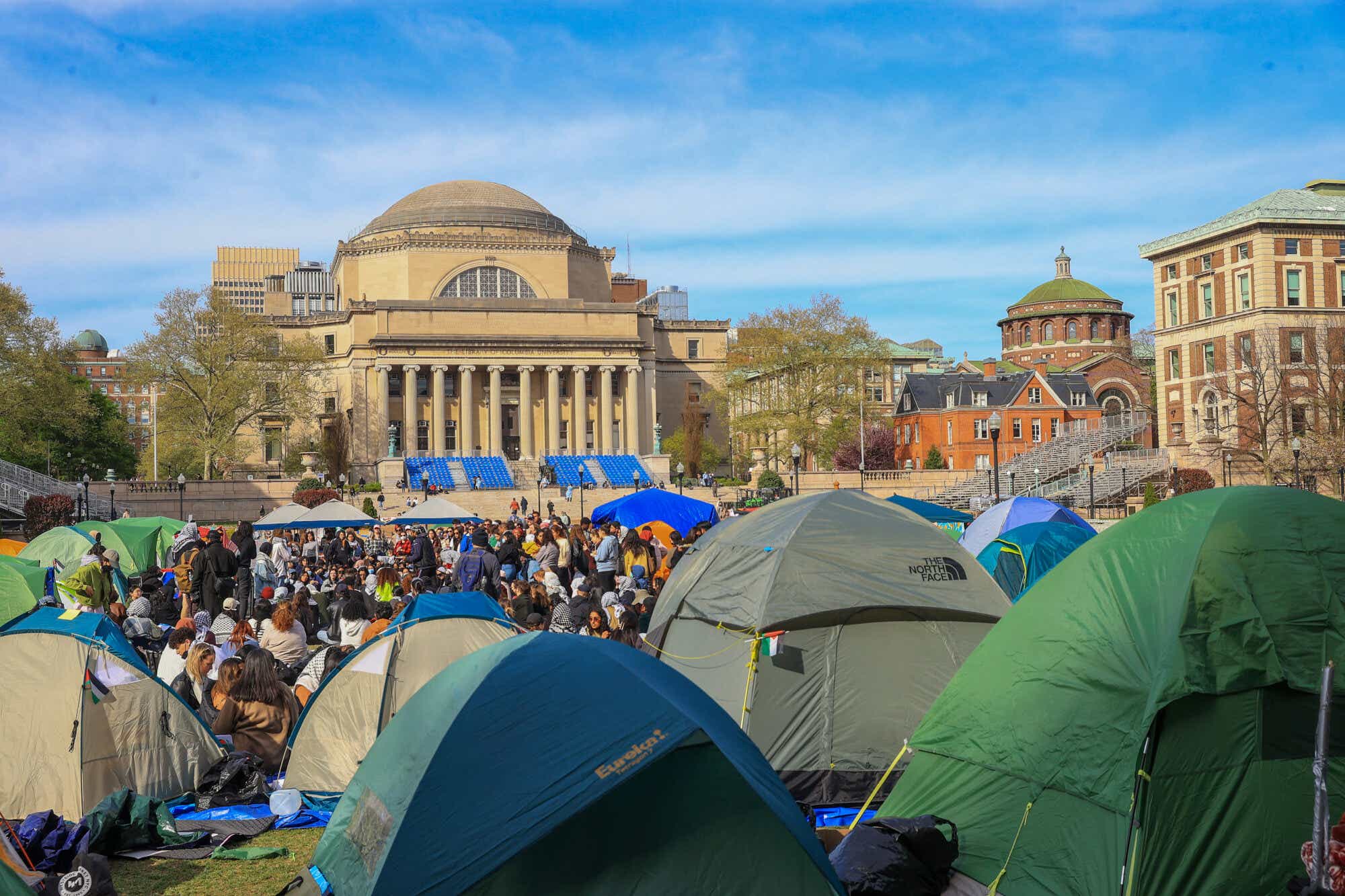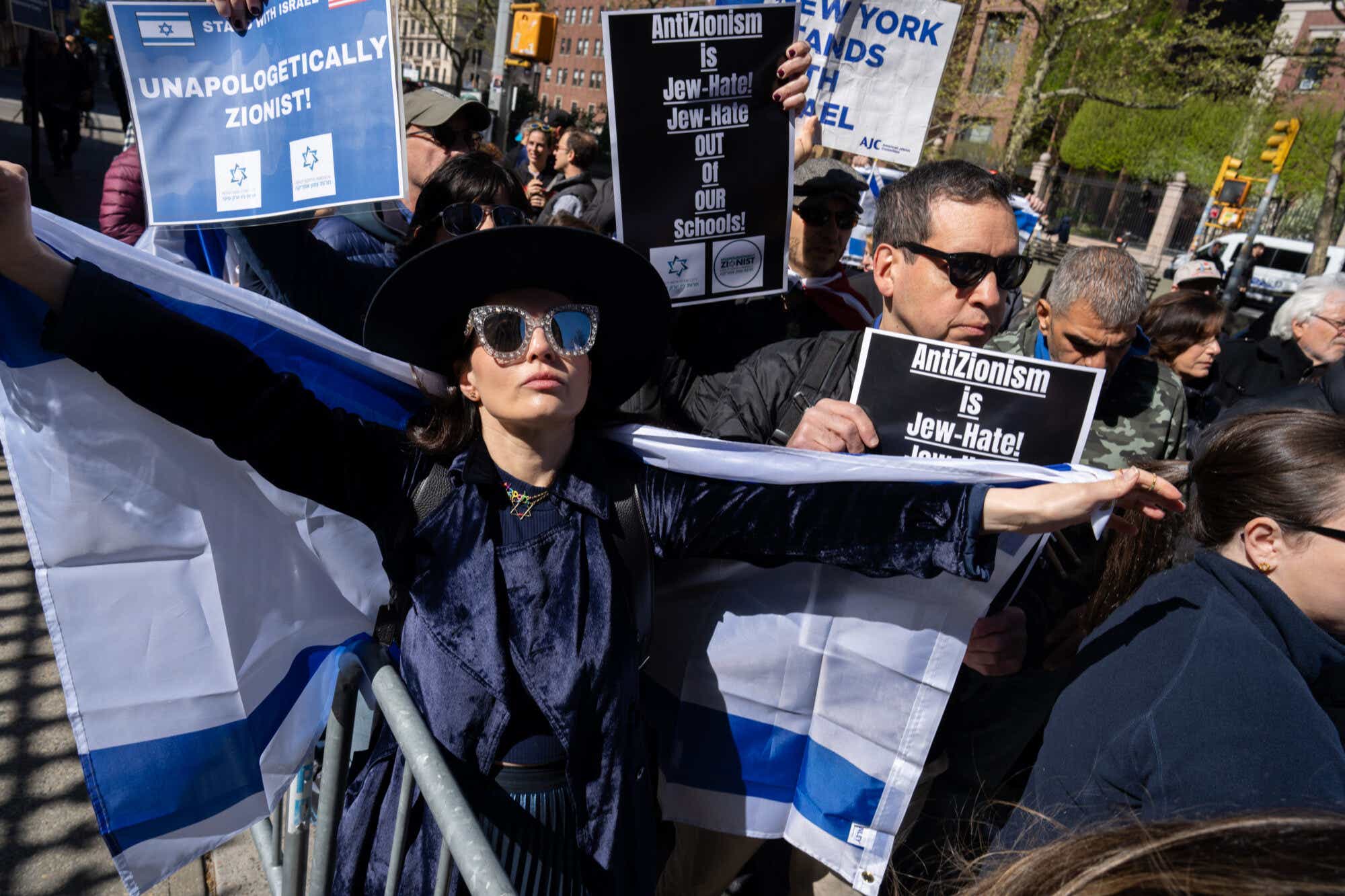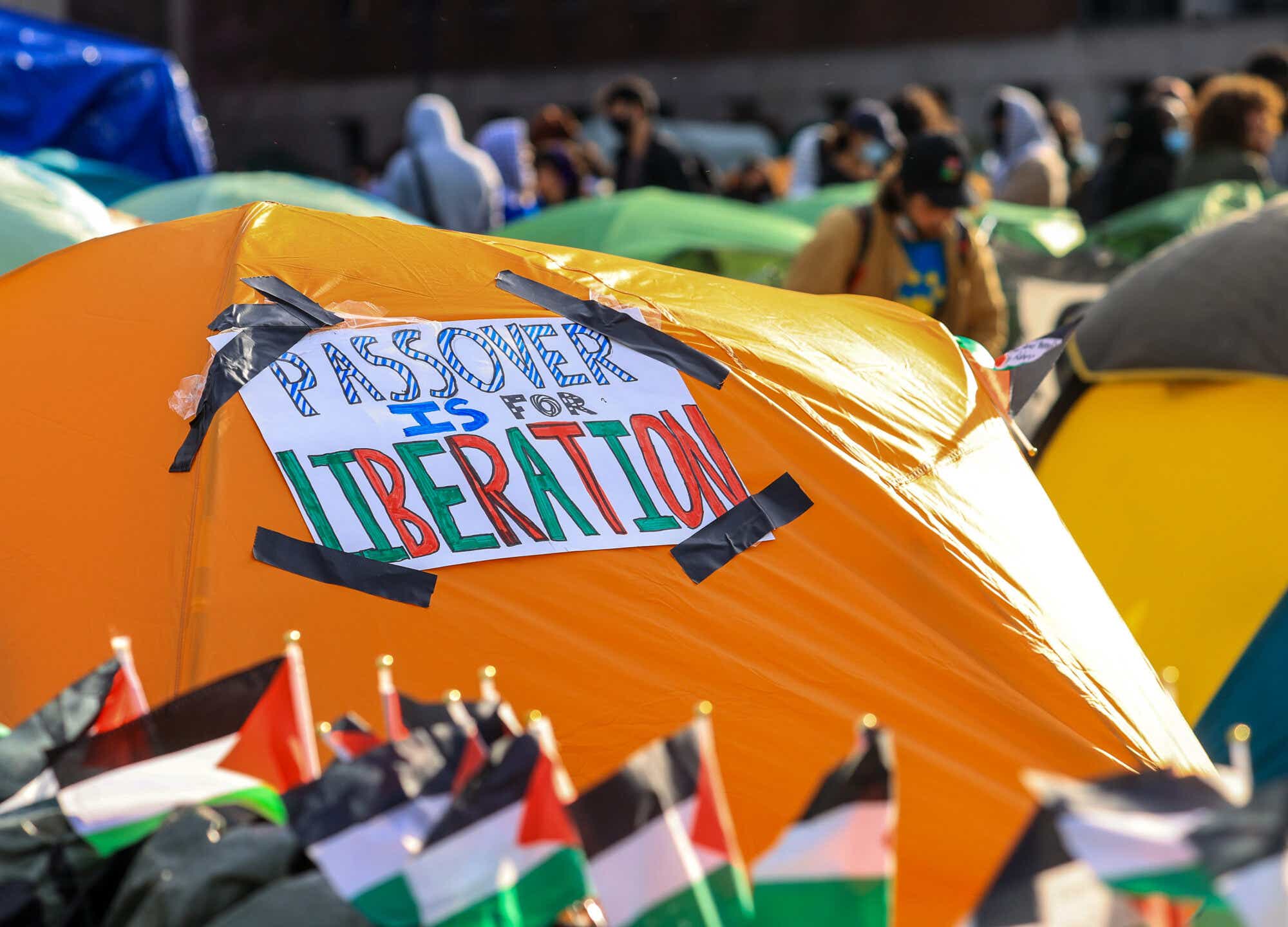It’s been one week since mass arrests took place at Columbia University, where pro-Palestinian students erected a “Gaza Solidarity Encampment” and demanded the university divest from companies that support Israel. With university president Minouche Shafik’s approval, NYPD officers arrested more than 100 Columbia and Barnard students, some of whom have since been suspended.
Tensions escalated over the weekend, and non-student protestors gathered outside the campus gates, some hurling antisemitic insults and threats and harassing Jewish students. On Sunday, Rabbi Elie Buechler, who’s associated with Columbia University’s Orthodox Union Jewish Learning Initiative on Campus, called for Jewish students to stay home, and by Tuesday, the university announced that classes for the rest of the semester would have a remote option (though students could also opt to attend in-person).
The campus remains closed to outsiders, and media access is limited. Katie Couric Media witnessed that for ourselves when we visited the area on Wednesday and saw police officers guarding locked gates around the school, which is open only to students who can scan in with their official Columbia ID.
Now, Columbia admin and student organizers are holding negotiations to dismantle some tents and remove non-affiliates from the encampments. We spoke to three student reporters who’ve been on the ground: Esha Karam, a junior at Columbia College and managing editor of student newspepr The Columbia Daily Spectator; Shea Vance, a sophomore at Barnard College and university news editor at The Spectator; and Emily Byrski, a graduate student at the Columbia School of Journalism. Here’s what it’s really like on campus right now.
What’s the latest news about the Columbia protests?
Shea Vance: Around 9:40 [Tuesday] night, President Shafik sent an email to the entire community announcing that negotiations with organizers and administration had a midnight deadline before the administration would begin considering “alternative options.” The broad interpretation of that was that the administration may be considering another police sweep. A lot of students began flooding to campus to protect the encampment, and we started seeing increased police presence around campus at that time.
Esha Karam: As that midnight deadline approached, people started briefly moving to tents off the main lawn. Someone announced that the university had agreed to extend the deadline to 8 a.m., which we couldn’t confirm. There was a lot of movement, a lot of confusion, and a lot of suspicions among students about what the next steps were.

What was it like watching NYPD arrest Columbia students?
EK: As student reporters, it’s a very visceral feeling to be covering your peers and your community in such a difficult time. It was very jarring to see and have to report as the police were coming in, scoping out, and then arresting students.
SV: The scale of these mass arrests was something that Columbia hadn’t seen in decades. [It harkens back to what happened] in 1968, when there were multiple rounds of arrests amid protests over the Vietnam War on campus.
Emily Byrski: I still get chills just thinking about it.
What does it feel like to be on campus right now?
EK: Every student is feeling the impacts of all the national attention and the scrutiny that Columbia is under. We have a heightened police presence around campus. We’re also seeing politicians flock to campus and host press conferences and get comments around campus. It’s a very intense time to be a student right now.
SV: This is this incredibly jarring moment… and I think people are realizing that they’re living through and are part of something that will be not only a part of Columbia’s history, but American history.
EB: I can only speak to my experience and the people I’ve spoken with, but overall, it’s pretty peaceful. Campus itself, especially since we’ve gone remote, has been pretty quiet. It’s a little eerie. Most of the time, it’s empty, and then all of a sudden, you’ll have these big demonstrations happen, and then it’s empty and quiet again. It’s coming in waves.

Do Jewish students feel unsafe?
EK: We have reported on the various antisemitic incidents that have happened, both off-campus and several on campus. Several students have expressed that they feel unsafe — it’s a sentiment that we’ve heard across campus since Oct. 7. We had a great perspective in one of our articles from a student who was Jewish and has had several antisemitic things said to him. But at the end, he said, “I don’t think this encampment is antisemitic. They’re protesting, and they have a right to free speech, and they’re peaceful. But I do think that the things that have happened to me are antisemitic.” It is a nuanced experience.
SV: We’re seeing, hearing about, and talking to a lot of students who have experienced these antisemitic incidents on and around campus, as we’ve seen this massive spike in protest activity. We also think it’s important to delineate between the protest activity on campus and these incidents we’re hearing reported.

What about the antisemitic protestors?
EK: A key distinction is what’s going on outside of Columbia’s space versus inside. To a large extent, the protests happening outside of Columbia’s gates are non-affiliates who are coming from across the city.
EB: A lot of the violence and really aggressive [behavior] has been from the outside protesters. A lot of the viral clips I’ve seen are people on the outside that, unfortunately, are being associated with Columbia and Columbia students. For the most part, these are people showing up and taking advantage of the situation. For example, there’s a clip that’s gone viral of a girl screaming something to the effect of, “We are Hamas,” which is terrifying. I don’t know who she was. And I’ve talked to a few of the students here and the people in the camp, and they don’t know either. They said she’s not associated with the camp.
What’s it like in the encampment?
EB: The protestors set out tape along the lawn, so there’s a central courtyard in the middle of the tents. There are probably 100 tents, and some tents have multiple people inside them.
It’s this strange little pseudo-society that they’ve set up in the middle of an Ivy League university. There’s a tent in the center of the lawn with a sign that reads “medical tent.” There’s the Cornucopia, or what they’re calling the food station, where people have been donating food and drinks. The lawn itself has a chain link fence around it, and they have an unofficial “security person” — a student or faculty member — that’s been assigned by the camp to each gate so that non-students can’t climb over the gates.
However, I witnessed a student essentially shove his way through the informal security setup at the encampment. He got really aggressive and started screaming at the protestors that they didn’t have the right to be there. The protestors were trying to de-escalate the situation.
On Monday night, I went to a Passover Seder. They handed out pamphlets that explained what a Seder is and why they were doing it. Instead of wine — because there’s no alcohol and no drugs allowed in the camp — they had grape juice. As the sun was going down, they were singing songs. It was quite beautiful.
They’re actually holding Muslim, Christian, and Jewish prayers every day. The campers have started organizing events — they had Punjabi dancers last week, and they had a Mexican mariachi band come in at one point.
EK: There are lulls in the day where they’re not hosting a teach-in or doing a chant, and those times people are just gathering and doing homework and talking.

What is the media getting wrong about the Columbia protests?
SV: The biggest one is seeing these blurred lines between the encampment, which has been the center of everything that has happened in the past seven days, and the waves of protests that it’s set off around campus.
EB: The media has really pushed [the narrative of], “Students are so unsafe, they can’t go to campus, they’re afraid for their lives.” I haven’t talked to anyone that’s said, “We feel like we’re in physical danger.”
We’ve been taught as journalism students that you have to be careful with how you equate things. And then I’m watching it happen in front of my eyes: Seeing something in person and then watching the media paint quite a different version of it. This is journalism school in a nutshell. We never expected it to be this literal right in front of our building.









